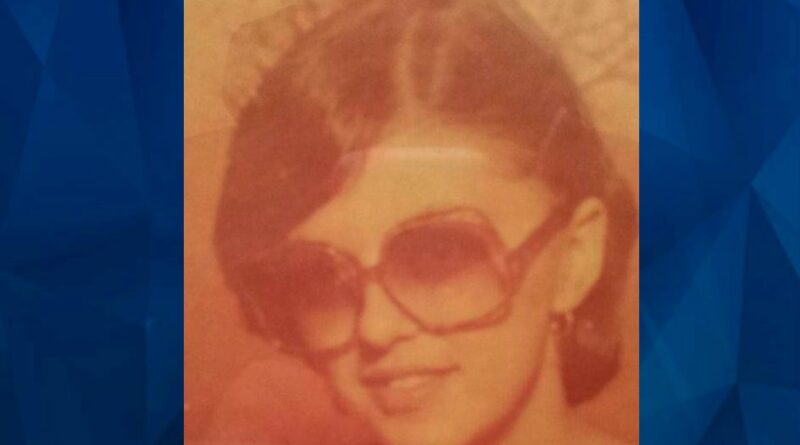Carmen Vargas Killed in Freeport California
Born in 1960, Carmen Vargas grew up in a tight-knit family in the Bronx, New York. The eldest of four children, she often helped care for her younger siblings while her parents worked long hours in factory jobs. Friends remember Carmen as fiercely loyal, with an easy laugh and a warm smile that drew people to her. From a young age she exhibited artistic talent—sketching portraits of classmates and decorating her bedroom walls with her own creations. Though money was tight, her parents instilled in Carmen and her siblings the value of hard work and perseverance, lessons she carried with her throughout her life.
A Search for Independence
By her late teens, Carmen yearned for a life beyond the streets she’d known. She dropped out of high school to help support her family, taking on a variety of odd jobs—from factory assembly work to waitressing at local diners. Despite the challenges, she pursued evening GED classes, determined to earn a diploma and one day attend community college. Her friends recall late nights spent studying by streetlight, her textbooks laid across greasy diner tables. Carmen’s dream was to become a graphic artist, merging her creative flair with the stability of a salaried profession.
Life on Long Island
In 1988, Carmen relocated to Freeport, Long Island, drawn by rumors of better-paying work and a quieter pace of life. Initially she lived with an aunt, then rented a modest room in a small house just off Merrick Road. Though she missed her family in the Bronx, she found camaraderie among fellow boarders and local small-business owners. During the day, she worked as a cashier at a roadside snack bar; by night, she sketched fashion illustrations at a folding table beneath the glow of a desk lamp. Her roommates recall her fierce pride in decorating their shared living room with her artwork.
Struggles and Survival
Life on Long Island was not without hardship. Without a high school diploma, Carmen’s job prospects remained limited. She took on additional shifts at the snack bar and occasionally labored in a warehouse packing boxes. Rent and bills often consumed most of her paycheck. In an effort to make ends meet, she turned to sex work—a decision she later described as painful but necessary for survival. Despite the danger, Carmen approached this work with professionalism, forging polite relationships with regular clients and always insisting on fair payment upfront.
The Night of Disappearance
On the evening of September 10, 1989, Carmen finished her shift at the snack bar and returned to her room to change and gather her belongings. She planned to meet a client later that night but first stopped at a neighborhood pizzeria for a slice of pepperoni. Security footage from the pizzeria shows her arriving at 10:45 p.m., alone, carrying a brown leather purse. She waved to the night-shift clerk and left around 11:10 p.m., heading east toward the Meadowbrook State Parkway. This was the last confirmed sighting of Carmen alive.
Discovery Along Meadowbrook Parkway
Shortly after dawn on September 11, 1989, a passing motorist on the southbound shoulder of the Meadowbrook State Parkway spotted an object tucked beneath a roadside shrub. Upon closer approach, the motorist realized it was a human body, partially concealed by a white towel. The Nassau County police responded within minutes, securing the scene and cordoning off the shoulder near the Merrick Road exit. The body lay face-down, legs extended toward the travel lanes. Nearby, officers found a length of frayed rope twisted around the victim’s ankles and neck, suggesting premeditated binding rather than a spontaneous act of violence.
Crime Scene Details
Investigators meticulously cataloged every detail: the towel covering the victim’s face bore a faint floral pattern, matching towels sold at discount stores along Merrick Road; the rope appeared to be utility cord commonly used in construction, indicating the perpetrator may have had access to trade supplies. No shoes or personal effects lay at the scene, but a distinctive silver charm bracelet remained intact on the victim’s wrist. Forensic teams collected grass and soil samples from the folds of her clothing, hoping to trace the body’s disposal route. Blood spatter analysis revealed the binding likely occurred elsewhere, then the body was transported and positioned at the roadside.
Forensic Examination and Autopsy
At the Nassau County Medical Examiner’s office, forensic pathologists conducted a thorough autopsy. The victim, later confirmed via dental records as 29-year-old Carmen Vargas, showed no signs of defensive injuries, suggesting she may have been incapacitated before binding. Toxicology tests revealed traces of sedative in her bloodstream—possibly administered unwittingly—indicating the assailant sought to immobilize her prior to strangulation. Cause of death was ruled as asphyxiation by ligature in conjunction with sedation, and time-of-death estimated between 11:30 p.m. on September 10 and 1:00 a.m. on September 11.
Initial Investigation and Leads
Detectives from the Nassau County Police Department canvassed the Merrick Road corridor, questioning construction workers, night-shift employees, and local residents. Although several claimed to have heard a muffled thud or seen a dark sedan speeding away around midnight, none provided a definitive description. The victim’s roommate reported Carmen had mentioned a new regular client, described only as a “tall man in his 30s” who drove a light-colored pickup truck. This lead guided investigators to cross-reference recent traffic citations and vehicle registrations, but the trail quickly grew cold when no matching owner emerged.
Community Outcry and Media Attention
News of the brutal murder rattled the Freeport community. Local churches held prayer vigils, laying candles at makeshift memorials near the Merrick Road exit. Newspapers ran black-and-white photographs of Carmen and appeals for witnesses. Flyers plastered utility poles across town carried her smiling portrait alongside the words: “Who knew her? Who drove by? Speak up for Carmen.” Her friends and family from the Bronx drove to Long Island, distributing leaflets and pleading for information. Despite the public fervor, tips remained thin, and the case slowly faded from front-page coverage.
Theories and Suspected Motives
Over the years, several theories emerged: a robbery gone awry; a targeted killing by someone Carmen knew; or the work of an opportunistic predator who noticed her vulnerability. The lack of purse or wallet at the scene fueled speculation the motive extended beyond theft. Some detectives postulated a personal vendetta, pointing to tattoos Carmen once showed friends—one bearing a heart and initials that could have provoked jealousy. Others noted the similarity of the binding and roadside disposal to other unsolved murders of sex workers on Long Island, hinting at a possible serial offender exploiting unmonitored stretches of highway.
Connection to Long Island Serial Killer Pattern
In the early 2010s, attention turned to the so-called Long Island Serial Killer (LISK) when multiple bodies of sex workers were recovered near Gilgo and Jones Beaches. Crime-scene analysts observed echoes of Carmen’s 1989 killing in those later cases: ligature bindings, lack of defensive wounds, and bodies left in isolated roadside locations. Although her murder predated the Gilgo discoveries by two decades, investigators revisited her case file, comparing rope fibers and binding techniques. Geographic profiling placed the Merrick Road site within a broader dump-site corridor spanning the Meadowbrook Parkway to the barrier islands—areas known to the suspected serial killer.
Renewed Investigation and Modern Forensics
In 2023, following the arrest of a primary suspect in the Gilgo Beach murders, prosecutors reopened Carmen’s case. Advances in DNA technology offered fresh opportunities: degraded rope fibers were sent for mitochondrial DNA extraction; soil samples underwent microbial analysis to pinpoint the body’s original location. Investigators also reinterviewed key witnesses using cognitive-interview techniques to elicit memories suppressed by time. Digital forensics combed through archived phone records and pager logs from 1989, seeking to identify the “regular client” who may have communicated with Carmen on the night she vanished.
Family’s Unwavering Pursuit of Justice
Throughout the decades, Carmen’s siblings never abandoned hope. Each year on September 11, they gathered at her gravesite in Greenfield Cemetery, leaving flowers and photos of happier times. They founded the Vargas Family Memorial Fund, providing scholarships for at-risk youth in Freeport and the Bronx—an effort to transform their loss into a gift for others. Through speaking engagements and media interviews, they kept Carmen’s story alive, hoping that constant public awareness would yield a breakthrough tip. Their resilience underscored a profound message: no murder victim should be forgotten.
Unanswered Questions and Future Prospects
Despite modern forensic tools and renewed focus, critical questions persist. Who supplied the sedative? Why was the face covered yet the charm bracelet left visible? Did a passing motorist notice the removal of a body from another vehicle before the roadside placement? Prosecutors have pledged to keep Carmen’s case open, encouraging anyone with even the smallest recollection—an unfamiliar car idling by exit ramps, a streetlight flickering at midnight—to come forward. As cold-case units nationwide join forces, there remains cautious optimism that one day the tangled threads of Carmen’s life and death will be unraveled.
Discover more from City Towner
Subscribe to get the latest posts sent to your email.




